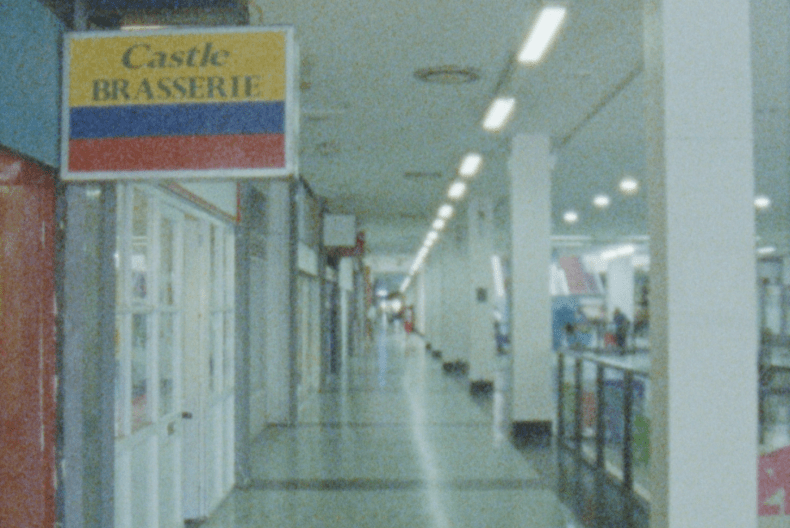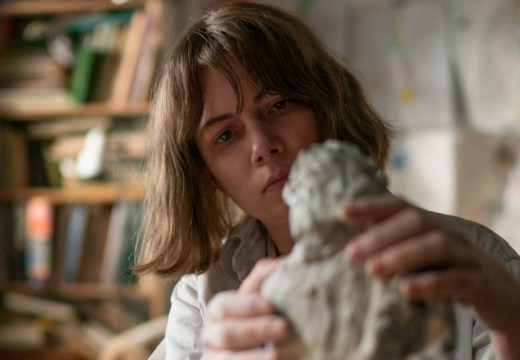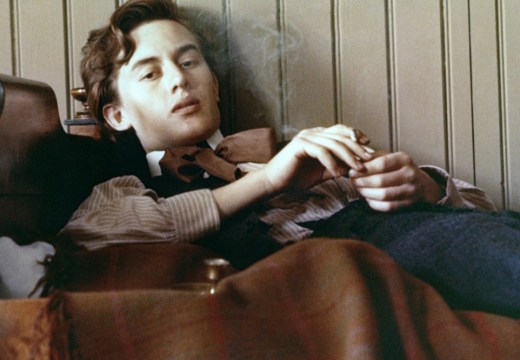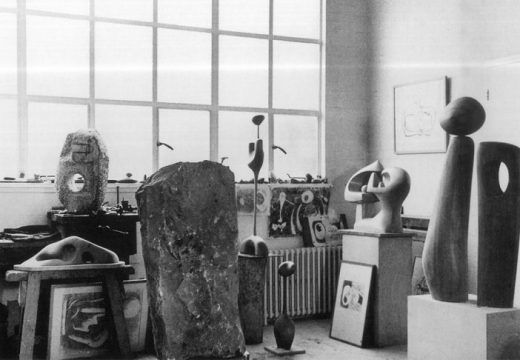British television has a rich history of programmes about art and artists. Varied in style and subject, series have ranged from John Berger’s Ways of Seeing (1972), which changed how many viewers looked at art, through to magazine shows like Monitor (1958–65) and more in-depth documentary series such as Omnibus (1967–2003) and Arena (1975–). There was also a time when viewers could tune in to artists’ moving-image work, through Channel 4’s The Eleventh Hour (1982–88) or the BBC’s Expanding Pictures (1997), as well as short-lived experiments such as ITV’s fast-paced video-essay series New Tempo (1967). The team of film curators at the Barbican have drawn from this well of British arts-focused television, as well as showing several complementary short films, to form the brief but probing ‘Artists in Residence’ season.
The season comprises four screenings, each comprising several short documentaries and moving-image works that are concerned with the relationship between art or artists and the city of London. Each screening is themed; respectively, they explore the precarity of living and working as an artist, the landscapes of London, the relationship between the city and its artists, and the portrayal of East London pubs. The season is valuable on two levels: in the opportunity it affords viewers to see and enjoy individual episodes or short films that are otherwise unavailable, and in its cumulative effect, its strands woven into a polyphonic depiction of art and the city – perspective on artists and London, and artists’ perspectives on London.
Television arts documentaries form the backbone and narrative throughline of the season. The first of these chronologically is Artists Must Live, a 30-minute documentary from 1953. (The first film to be funded by the UK’s Arts Council, it was an early work by director John Read, who would go on to become a key figure in the BBC’s fine arts documentaries; he went on to produce The Artist Speaks, the first show in which artists talked about their work direct to camera.) A straightforward documentary with a voiceover by art historian Basil Taylor, Artists Must Live acts as a wide-ranging survey of what it meant to live as an artist in the early ’50s, from the relative security of being a student at the Slade School of Fine Art to the more precarious position of being a jobbing artist; it argues for the necessity of commercial or state funding to supplement the then increasingly antiquated practice of private patronage.
Plus ça change. One of the participants in Artists in Residence (1988), which gives the programme its title, notes that ‘it’s virtually impossible for most artists in this country to earn a living from what they do – there just isn’t enough art patronage, enough people who want to buy art or pay for it.’ A production of the BBC Community Programme Unit, Artists in Residence follows a collective of artists living on Beck Road in Hackney. Residing in homes leased by a housing association specifically for artists, and therefore able to afford rent on meagre incomes, the community was forced to fight for its survival when rising property prices led to plans to sell off the land.

Deadphant (2020), directed by Ayo Akingbade. Courtesy the director
The collective ultimately managed to save the buildings from demolition through protest and community action. It’s a rather different picture of the art-world property rollercoaster to the one presented some years later in the 2001 docu-soap The New EastEnders, which captured the transformation of Shoreditch. The show took in the perspectives of collectors, auction houses, galleries and dealers; the Barbican curators, in keeping with the programme’s focus, have selected the episode ‘The Artists’, which follows young talent trying to gain a foothold in the local London art scene as well as shadowing more established names including Tim Noble, Sue Webster and Tracey Emin. Their fellow Young British Artist Sarah Lucas is the focus of Vanessa Engle’s Two Melons and a Stinking Fish, made for the BBC in 1996, which doubles as a profile of Lucas and a snapshot of the London art scene at the height of the YBA phenomenon; the film allows Lucas space to embody the provocative attitude that defined the movement.
If these three works take as their subject the interaction between artists and London, the 1985 episode of Arena titled ‘Old Kent Road’ is more an artist’s view of the city. Framed by paraphrased excerpts from the prologue of Chaucer’s Canterbury Tales, which anticipate the episode’s cast of idiosyncratic local storytellers, Mary Dickinson’s film is a patchwork study of place, attempting to express the essence of the street’s personality and history via a tapestry of tales from its storied past. Though it doesn’t revel in nostalgia, making sure to be a contemporary sketch as much as it harks back to bygone times, it’s difficult not to view it as a historical document, a window into another era.
This could be said of the programme as a whole, rooted as it is in now-archival materials. Donna Travis’s The Last Pub (2001) and Peter Davis’s Pub (1962) offer glimpses into cherished drinking houses, while Ayo Akingbade’s Deadphant (2020) manages to cram an impressive sense of atmosphere into its three-minute wander through the deserted halls of the Elephant and Castle shopping centre before its demolition. Meanwhile, the Slade appears at various points, our perspective of it shifting throughout the years – from a place of study in Artists Must Live to an alma mater in Artists in Residence and finally, and most intimately, as the setting for then love is the name, Niki Kohandel’s 16mm short about student anti-racism protests in 2020.
The curators expertly pull at – and tie together – these assorted threads, but what is most striking about the season is the sheer wealth and breadth of material they have been able to call upon. From polemical pieces to more poetic studies, the films in the four screenings are both probing and compassionate – true of the artists’ moving-image work but even more evident in the form and focus of the television documentaries. The landscape for airing such work has changed dramatically over the decades, in the wake of top-down policy decisions regarding arts funding and programming, but also amid shifting consumer attitudes towards media – why commission new non-fiction arts series in primetime slots when reality TV is what audiences seem to want?
Revisiting the films and episodes on display in ‘Artists in Residence’ offers a timely reminder of why television once was, and can continue to be, vital in fostering connections between artists and the public, while carving out space for creativity, intellectual enquiry and clear-eyed conversations in a world that increasingly devalues artists and the arts.
‘Artists in Residence’ is at the Barbican Centre, London, until 15 February.
Unlimited access from just $16 every 3 months
Subscribe to get unlimited and exclusive access to the top art stories, interviews and exhibition reviews.














![Masterpiece [Re]discovery 2022. Photo: Ben Fisher Photography, courtesy of Masterpiece London](http://www.apollo-magazine.com/wp-content/uploads/2022/07/MPL2022_4263.jpg)
It’s time for the government of London to return to its rightful home